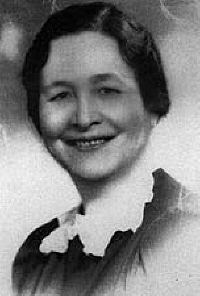Related Research Articles
White Buffalo Calf Woman or White Buffalo Maiden is a sacred woman of supernatural origin, central to the Lakota religion as the primary cultural prophet. Oral traditions relate that she brought the "Seven Sacred Rites" to the Lakota people.
Nordic folklore is the folklore of Denmark, Norway, Sweden, Iceland and the Faroe Islands. It has common roots with, and has been mutually influenced by, folklore in England, Germany, the Low Countries, the Baltic countries, Finland and Sápmi. Folklore is a concept encompassing expressive traditions of a particular culture or group. The peoples of Scandinavia are heterogenous, as are the oral genres and material culture that has been common in their lands. However, there are some commonalities across Scandinavian folkloric traditions, among them a common ground in elements from Norse mythology as well as Christian conceptions of the world.

Ella Cara Deloria, also called Aŋpétu Wašté Wiŋ, was a Yankton Dakota (Sioux) educator, anthropologist, ethnographer, linguist, and novelist. She recorded Native American oral history and contributed to the study of Native American languages. According to Cotera (2008), Deloria was "a pre-eminent expert on Dakota/Lakota/Nakota cultural religious, and linguistic practices." In the 1940s, Deloria wrote a novel titled Waterlily, which was published in 1988, and republished in 2009.

The Cegua, La Sihuehuet or Siguanaba, Cigua or Siguanaba is a supernatural character from Central American folklore, though it can also be heard in Mexico. It is a shapeshifting spirit that typically takes the form of an attractive, long haired woman seen from behind. She lures men away into danger before revealing her face to be that of a horse or, alternatively, a skull.

La Xtabay is a Yucatec Maya folklore about a demonic femme fatale who preys upon men in the Yucatán Peninsula. She is said to dwell in the forest to lure men to their deaths with her incomparable beauty. She is described as having beautiful, shining black hair that falls down to her ankles and wearing a white dress. One of the most accepted versions of the myth comes from a book, Diez Leyendas Mayas (1998), written by Jesus Azcorra Alejos.
La Sayona is a legend from Venezuela, represented by the vengeful spirit of a woman that shows up only to men that have love affairs out of their marriages. The name "Sayona" refers to the cloth the ghost wears which is a long white dress similar to a medieval undergarment.

Paula Gunn Allen was an American poet, literary critic, activist, professor, and novelist. Of mixed-race European-American, Arab-American, and Native American descent, she identified with her mother's people, the Laguna Pueblo. Gunn Allen wrote numerous essays, stories and poetry with Native American and feminist themes, and two biographies of Native American women. She edited four collections of Native American traditional stories and contemporary writing.
Spider Grandmother is an important figure in the mythology, oral traditions and folklore of many Native American cultures, especially in the Southwestern United States.

The Patasola or "single leg" is one of many legends in South American folklore about female monsters from the jungle, appearing to male hunters or loggers in the middle of the wilderness when they think about women. The Patasola appears in the form of a beautiful and seductive woman, often in the likeness of a loved one, who lures a man away from his companions deep into the jungle. There, the Patasola reveals her true, hideous appearance as a one-legged creature with ferocious vampire-like lust for human flesh and blood, attacking and devouring the flesh or sucking the blood of her victims.

The Oglala are one of the seven subtribes of the Lakota people who, along with the Dakota, make up the Očhéthi Šakówiŋ. A majority of the Oglala live on the Pine Ridge Indian Reservation in South Dakota, the eighth-largest Native American reservation in the United States.

Iara, also spelled Uiara, Yara or Hiara or Mãe das Águas, is a figure from Brazilian mythology based on the ancient Tupi and Guaraní mythology. The word derives from Old Tupi yîara = y ("water") + îara = "lady of the lake". Depending on the oral tradition and the context of the story, she can be seen either as a water nymph, a siren, or a beautiful mermaid that lives in the Amazon River.
Dreamkeeper is a 2003 film written by John Fusco and directed by Steve Barron. The main plot of the film is the conflict between a Lakota elder and storyteller named Pete Chasing Horse and his Lakota grandson, Shane Chasing Horse.

Colombian folklore are beliefs, customs and cultural traditions in Colombia.
Mythic humanoids are legendary, folkloric, or mythological creatures that are part human, or that resemble humans through appearance or character. Each culture has different mythical creatures that come from many different origins, and many of these creatures are humanoids. They are often able to talk and in many stories they guide the hero on their journey.

Traditional gender roles among Native American and First Nations peoples tend to vary greatly by region and community. As with all Pre-Columbian era societies, historical traditions may or may not reflect contemporary attitudes. Gender roles exhibited by Indigenous communities have been transformed in some aspect by Eurocentric, patriarchal norms and the perpetration of systematic oppression. In many communities, these things are not discussed with outsiders.

Ceremony is a novel by writer Leslie Marmon Silko, first published by Viking Press in March 1977. The title Ceremony is based on the oral traditions and ceremonial practices of the Navajo and Pueblo people.

In mythology and folklore, a vengeful ghost or vengeful spirit is said to be the spirit of a dead person who returns from the afterlife to seek revenge for a cruel, unnatural or unjust death. In certain cultures where funeral and burial or cremation ceremonies are important, such vengeful spirits may also be considered as unhappy ghosts of individuals who have not been given a proper funeral.

The Skogsrå, Skogsfrun, Skogssnuvan, Skogsnymfen, Råndan or Huldran, is a mythical female creature of the forest in Swedish folklore.
Wocekiye is a Lakota language term meaning "to call on for aid," "to pray," and "to claim relationship with". It refers to a practice among Lakota people engaged in both the traditional Lakota religion as well as forms of Christianity.
References
- ↑ "Deer Woman". Native Languages. Retrieved 17 November 2016.
- ↑ Russow, Kurt (2013). ""Gazing at Her Cloven Feats:" Mythic Tradition and "The Sacred Way of Women" in Paula Gunn Allen's "Deer Woman"". Femspec. 13 (2): 25–39, 97.
- 1 2 Dunn, Carolyn."Deer Woman and the Living Myth of the Dreamtime." Endicott lournal of Mythic Arts (2003), Web. 11 June 2009
- 1 2 Allen, Paula Gunn. "Deer Woman." Grandmothers of the Light: a Medicine Woman's Sourcebook. Boston: Beacon P, 1991.185-194
- ↑ LaDuke, Winona Last Standing Woman Page 243 Published by Voyageur Press, 1997 ISBN 0-89658-452-6 Accessed via google Book October 12, 2008
- 1 2 Crawford, Suzanne J.; Kelley, Dennis F. (2005). American Indian Religious Traditions. Santa Barbara, CA: ABC-CLIO. p. 651. ISBN 1-57607-517-6.
- ↑ Hede, Marcela. "The Legend of La Patasola". Hispanic Culture Online. Archived from the original on 18 November 2016. Retrieved 17 November 2016.